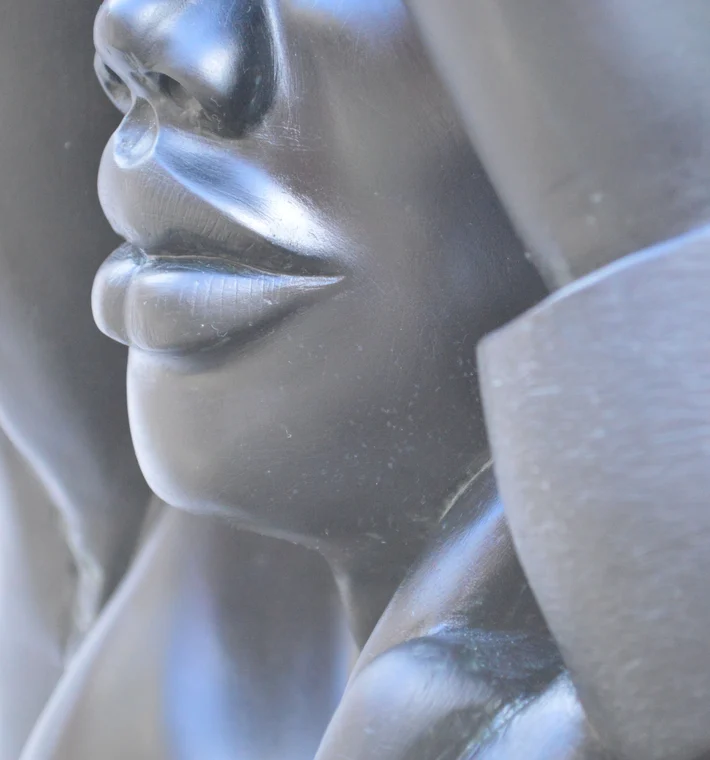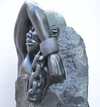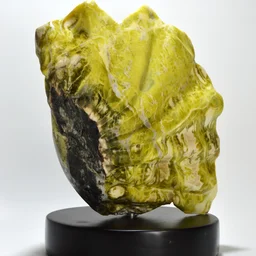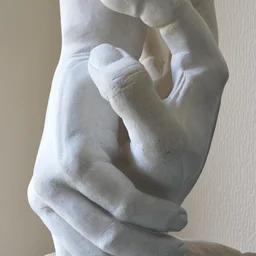Sculpture Information
As soon as I met this Serpentine Soapstone, I knew it had pain and movement in its story. This stone had been standing unworked in my workshop for two years until I heard about the oldest-surviving notated slave song which was found in Gloucestershire Archives… and I knew Slave Song was the match with this stone. I listened to Roger Gibbs musical interpretation of the song, and wept, and carved as the pain of the slaves captivity, in the words and music, echoed down the centuries from the sugar plantations of Barbados.
The song was written down more than 200 years ago by abolitionist Granville Sharpe. In the 1970s the document was placed in Gloucestershire Archives and in 2017 was listed in the UNESCO Memory of the World. The research below helps to explain the composition of the sculpture:
Nomination form International Memory of the World Register An African Song or Chant from Barbados ID Code [2016-07]
‘The lyrics tell of the harsh treatment meted out to the enslaved and how patently aware they were of their tenuous existence. The wistful expression “massa buy me, he won’t kill me “, captures a reality in the life of the enslaved. Black life was of little moral value to the enslavers (replacements were easy to come by). This meant that the enslaved were easily expendable. However, because he was bought, in the eyes of the enslaved, killing him would not be a good commercial decision. This lack of stability in living conditions and life are also expressed in the song through the words “he ship me regular “. Enslavers treated the enslaved as commodities and so they were bought and sold (shipped) with frequency either to the highest bidder or in order to acquire better “stock”. The reference to the riverside captures the role that the sea and other waterways played in the slave trade and life of the enslaved’.
The sculpture resonates with phrases from the manuscript. ‘massa buy me, he won’t kill me’ - The person in my sculpture is defending themselves with their raised arm from the beatings. ‘He ship me regular’ - The person is in chains, bought and sold as a commodity, and the oak base reminds us of the terrible transportation by ship.
Once I had released the visualised image, I left the rest of the rock raw; natural as it was mined from the quarry – honouring the stones original state.
The person emerging from the stone has a broken chain, suggesting future emancipation.
This sculpture serves as a reminder, ‘lest we forget’ the terrible evils which humanity is capable. Slavery is still not eradicated. The Anti-Slavery Partnership states that, ‘In 2021, there were 12,727 referrals into the NRM (the UK’s National Referral Mechanism) compared to 3,804 in 2016.’ It is a growing issue, and these reported figures are likely to be only a small fraction of the extent of the problem. The song and sculpture are a reminder that the fight against slavery goes on.
















